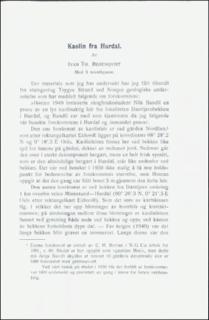Kaolin fra Hurdal.
| dc.contributor.author | Rosenqvist, Ivan Th. | |
| dc.coverage.spatial | 19154 Hurdal | |
| dc.date.accessioned | 2020-08-26T12:42:24Z | |
| dc.date.available | 2020-08-26T12:42:24Z | |
| dc.date.issued | 1952 | |
| dc.identifier.uri | https://hdl.handle.net/11250/2674602 | |
| dc.description.abstract | In Hurdal, 60 km NNE of Oslo, there are deposits of a light clay, originating from the decomposition of syenite. Samples from two localities have been investigated and by differential thermal analysis (Diagram fig. 3) proved to consist chiefly of kaolinite. The tables on p. 7 and the histograms fig. 2 give mechanical analyses of the clay. | |
| dc.language.iso | nor | |
| dc.relation.ispartofseries | NGU (183) | |
| dc.rights | Navngivelse 4.0 Internasjonal | |
| dc.rights.uri | http://creativecommons.org/licenses/by/4.0/deed.no | |
| dc.subject | LEIR | |
| dc.subject | STØRKNINGSBERGART | |
| dc.subject | PETROGRAFI | |
| dc.subject | KAOLIN | |
| dc.subject | BERGGRUNNSGEOLOGI | |
| dc.subject | OMDANNET BERGART | |
| dc.title | Kaolin fra Hurdal. | |
| dc.type | Journal article | |
| dc.description.localcode | 35411 | |
| dc.source.pagenumber | 5-9 |
Files in this item
This item appears in the following Collection(s)
-
Artikler [1064]
Artikler fra seriene NGU, NGU Bulletin og NGU Skrifter

